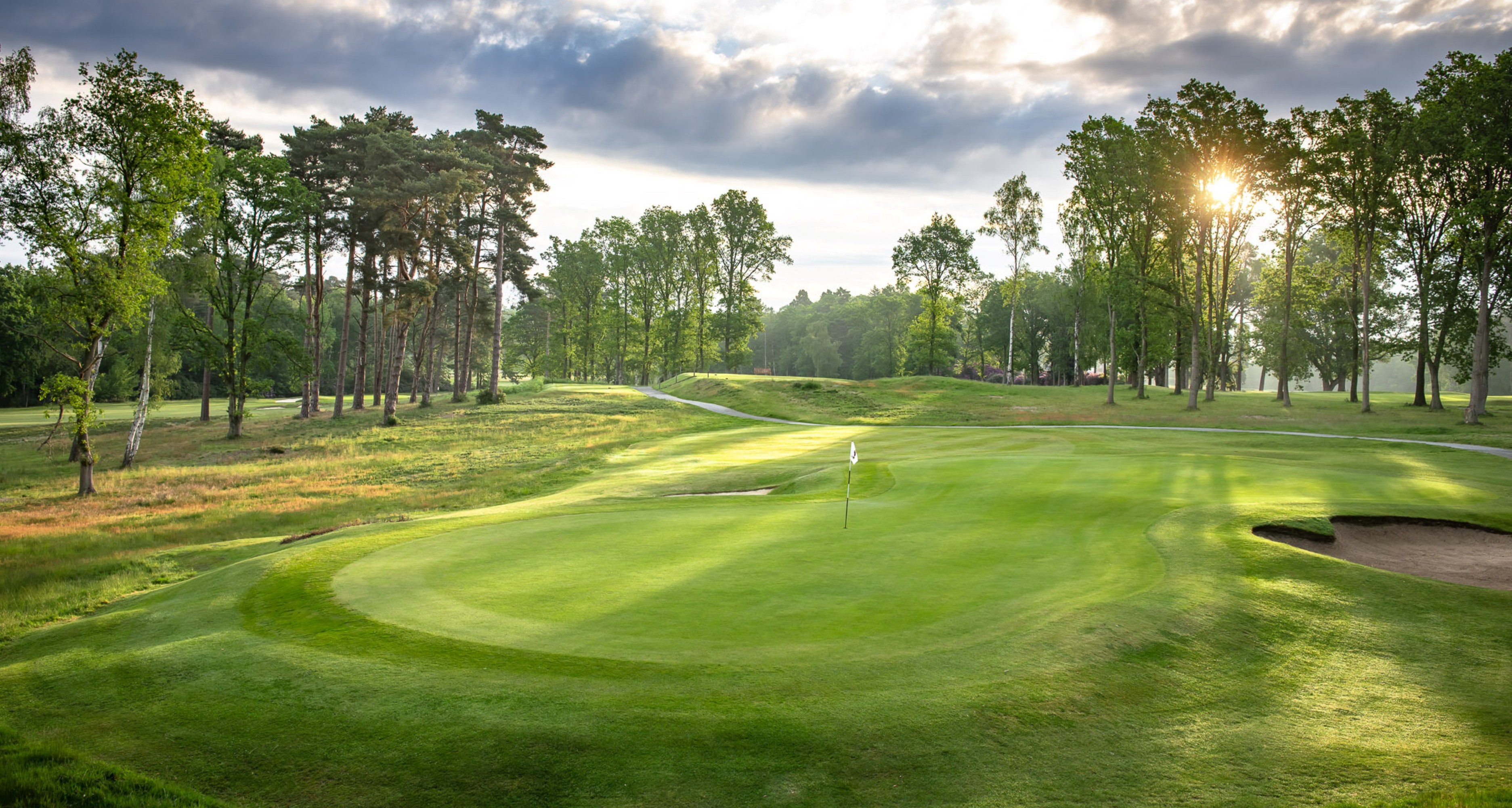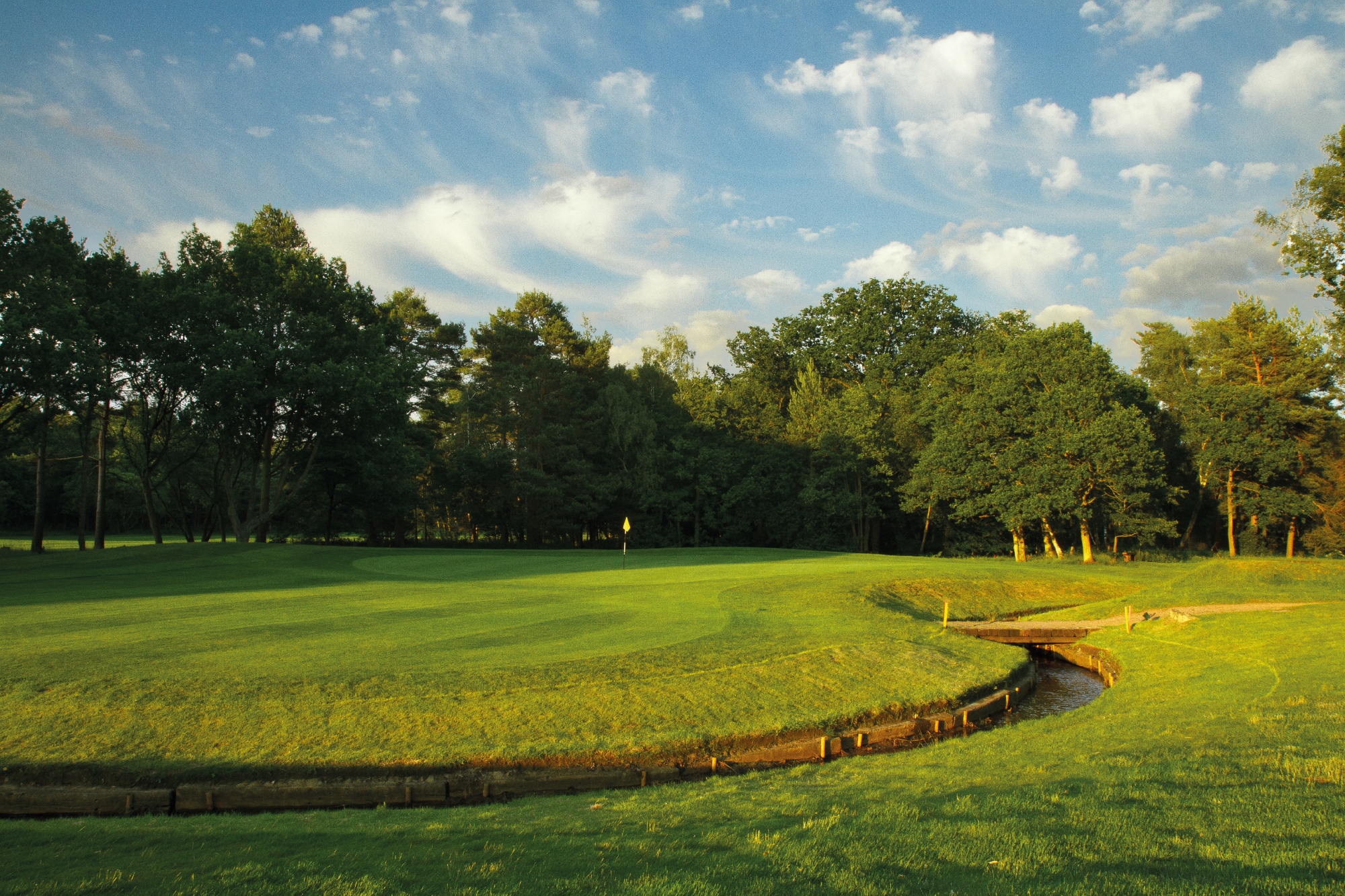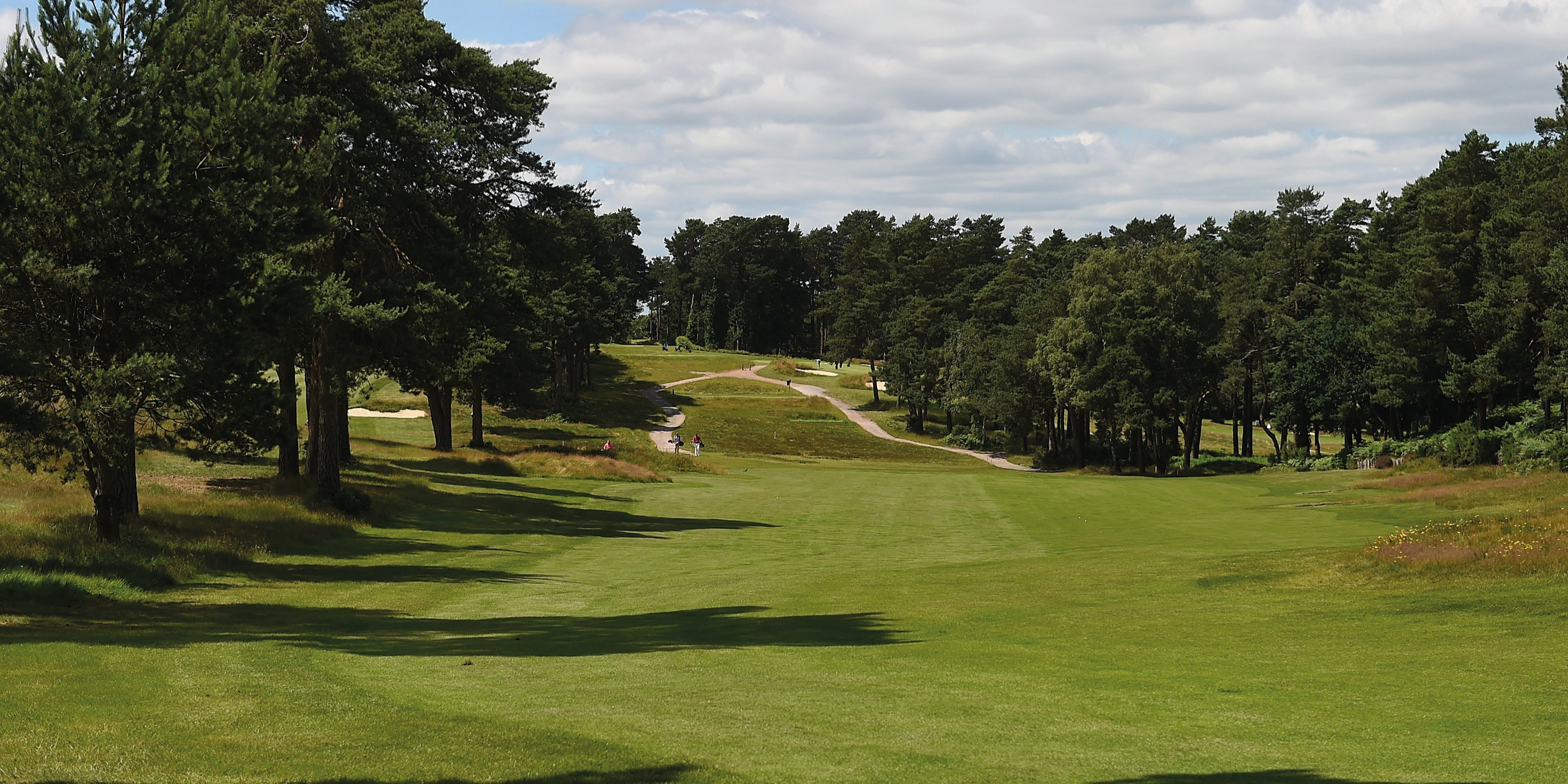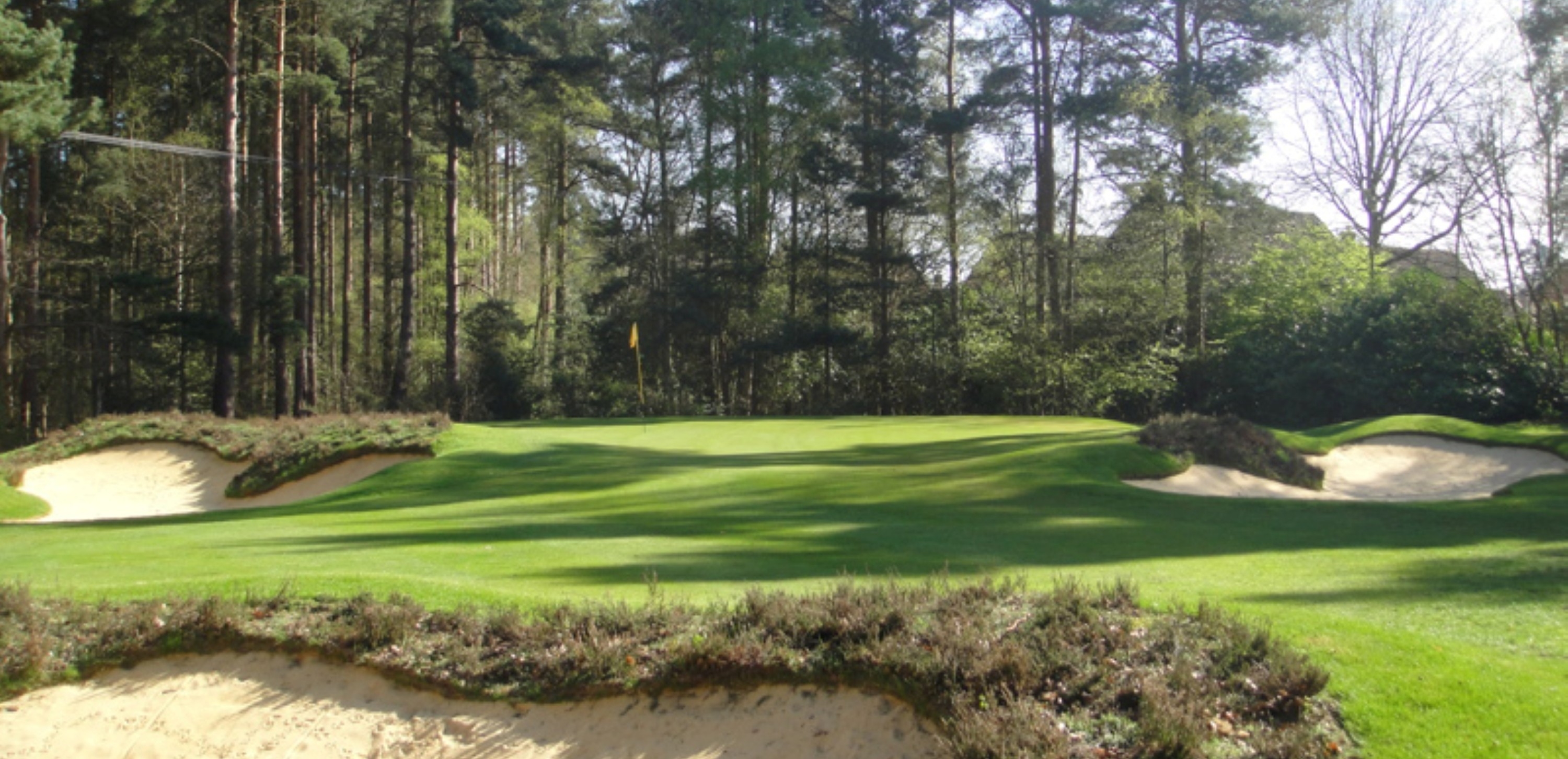
North Hants
North Hants | NCG Top 100s : England Golf Courses
Rankings
5th
99th
205th
North Hants was founded in 1904 and has been shaped by the distinguished likes of James Braid, Harry Colt and Tom Simpson.
Donald Steel and Tom MacKenzie (of MacKenzie & Ebert) have made recent changes to the course, while trees have been felled to make way for growing heather, bringing back the heathland feel to the course.
With famous members and some cracking holes, North Hants is a great place to play golf, in amongst the trees and heather.
Visit the North Hants website here.
Go Back To NCG's Top 100s Homepage.
Advertisement

A Brief History of North Hants
North Hants was one of the first golf clubs to be founded in the United Kingdom in the 20th Century, with its opening coming in 1904.
The course was originally designed by five-time Open Champion James Braid, with the great Harry Colt then making alterations a decade later. Tom Simpson would then improve the course further in 1930.
In more recent years, Donald Steel and Tom MacKenzie have made changes at North Hants, with alterations and brand new holes being added.
The club is also famous for one of its members. Justin Rose – winner of the 2013 US Open – has been a member at North Hants for much of his life.
North Hants Review | NCG Top 100s: England
Advertisement

North Hants is on the western edge of the sand belt that cuts through Surrey, Berkshire and Hampshire and is a blend of heathland and parkland. A recurring theme is gentle side slopes, so it often feels as though you only have half a fairway to aim at, putting a premium on good driving. The course measures more than 6,500 yards from the back tees, making length one of the course’s defences, along with plenty of trees and sand traps throughout.
The course opens with a long and testing par 3, well over 200 yards, and with three bunkers guarding the putting surface. Those starting with a par are in a minority. The 2nd is a cracking dog-leg left par 4, one of more than 430 yards, so it requires two solid blows to get on the green in regulation. The first obvious highlight comes in the shape of the par 5 3rd. The fairway slopes from left to right and it takes the strongest of tee shots to bring the green into range, not least because there is a lake to navigate. It's a genuine three-shotter for most. There is also a green halfway down the hole, so it can be split into 3a and 3b during the winter months, or for when work is being done to another hole on the property to keep the layout at 18 holes.
The 4th is the first gentle hole, but we use gentle very loosely. Although only 330 yards from the tips, the fairway is narrow, and with a bunker on its left side. The green is somewhat peanut-shaped, with two bunkers cutting into the surface on the middle of each side. You then reach the 5th, the Stroke Index 2 at North Hants. A long and testing par 4, one with a total of seven bunkers, and trees littering both sides of the fairway, this is another hole where you are doing well if you come off with a par. 6 sees you drive to a diagonally-angled fairway, and it also has one of the longest greens on the property – one with four bunkers surrounding it. The 7th is the last of a quartet of par 4s in the middle of the front nine, and although pretty straight, the heather pinches in on the right side, while a fairway bunker cuts in on the left. Avoid all that, and you’ll be aiming for the green with your second.
The two par 3s on the front nine are as different as can be, with the 8th coming in at just 122 yards. For most, it will be a wedge or low iron, but the green is oddly-shaped, and depending on where the flag is, this could actually be a very tricky two-putt. The final hole on the front nine is another long par 4, and another that moves slightly to the right. That comes after the tee shot, where you need to avoid the three fairway bunkers. Three more traps are down by the putting surface.
Like the front side, the back nine also begins with a par 3. The 10th is 190 yards and plays to a large, round green. Another quartet of par 4s follows to get you into the back nine at North Hants. 11 is a tricky hole, with a large fairway bunker being both the aiming point, and the thing to avoid with your tee shot. The 12th is the Stroke Index 1, and it is not difficult to understand why. At 450 yards, it is the longest of the par 4s on the course, and it is also one of the narrowest. If you can find the fairway, it will still require at least a long iron, if not more, to find a small target, a surface surrounded by trees. The 13th is a much nicer prospect; shorter, wider and with a larger green, while the 14th is the last of those par 4s and plays as a long tee shot over heather to a dog-leg right.
The closing stretch at North Hants begins with the last of the par 3s, the 164-yard 15th. The approach is to another green that is oddly-shaped, before you come to a tough final three. Both 16 and 17 play with the railway line running down their right side. The former is a long par 4 of 425 yards, and it is a hole where the fairway stops around 120 yards from the green. Two bunkers guard the putting surface, both sitting front left of the green. The penultimate hole is a short-ish par 5, around the 500-yard mark. Those who find the fairway will be tempted by taking the green on in two, but anything long will be in the trees sitting behind the green. The final hole at North Hants is another arrow-straight, long par 4. Four fairway bunkers are dotted down the hole, along with the thick trees on the right side. A large green awaits your approach, and if you can find it, there might just be a chance of a birdie on the last hole...
Our Panellists Notes for 2025
Dan Murphy: Shaped by several of the greats a century and more ago, recent work from Donald Steel and now Tom Mackenzie has added new holes and is currently concentrating on bunker and heather restoration. We await the results eagerly because this is a course and a piece of land with much in its favour
Read more about our panellists here.
Advertisement

FAQs about North Hants
Where is North Hants located?
As the name would suggest North Hants Golf Club is located in the north of Hampshire, one of several counties on the south coast of England. It is near Aldershot, Fleet and Farnborough, with the M3 – which runs from Sunbury-on-Thames to Eastleigh – running along the northern boundary of the course. The English capital city of London is only 40 miles to the northeast of the golf club.
Fleet is the home to the nearest train station to North Hants, with services from London Waterloo running via Fleet to Basingstoke and through to Portsmouth Harbour on a regular basis. The biggest and busiest airport in the United Kingdom – London Heathrow Airport – is also the closest to North Hants, situated 25 miles away. London Gatwick offers another option, with the second busiest airport in the country sitting 50 miles from the venue to the southeast.
Are there any NCG Top 100s: England venues nearby?
North Hants Golf Club is in a hotbed for English golf, with Hampshire and Surrey’s best all close by. The 3 W’s of West Hill, Worplesdon, and Woking are all in close order, along with the likes of Camberley Heath, Hankley Common, Hindhead and New Zealand, to name just a few.
What golf facilities does North Hants offer?
As well as the sublime 18-hole golf course, North Hants is also the home to a driving range and practice nets so you can get your swing warmed up and ready to go. There is also a short game area and a putting green for those final touches.
What are the green fees at North Hants?
The price of a green fee at North Hants changes throughout the year, depending on the season. It is also different depending on whether it is a weekday or weekend.
For more information on current green fees at North Hants, visit their website here.
Course Reviews

0.0 | 0 reviews



